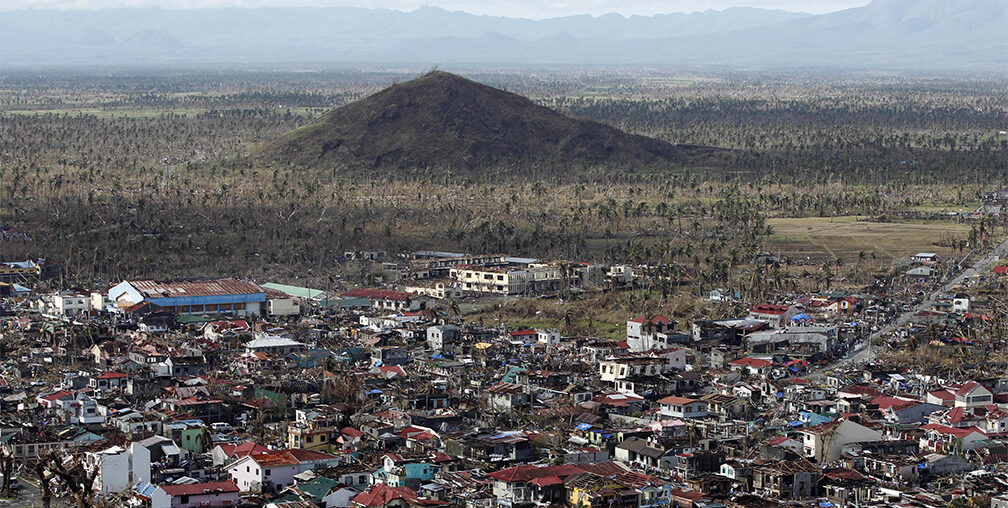ON the 11th anniversary of Super Typhoon Yolanda (international: Haiyan), a Harvard University survey revealed that Filipinos are more disaster-aware than ever, showing a 42-percent increase in their self-reported readiness over the past seven years.
The Harvard Humanitarian Initiative (HHI) study measured disaster preparedness across five criteria, such as planning, training, material investment, information, and social support. It showed that Filipinos scored an average of 19.2 out of 50, a notable jump from the 13.5 score in 2017.
However, this calls for a considerable amount of work to be done, especially in a country that has consistently ranked as the most disaster-prone in the world for three consecutive years.

Initiative Resilient Communities program
director, on the low level of disaster
preparedness activities among Filipinos:
“For a country as vulnerable to disasters
as the Philippines, this is not enough,
so we must accelerate our efforts to
ensure Filipinos are investing, planning,
training, and building closer ties to their
communities.”
Based on the data, Filipinos’ overall disaster preparedness remains low, with the highest scores recorded in information (4.9 out of 10) and the lowest in social support (2.3 out of 10).
For specific social support activities, only 23 percent of Filipinos belong to a group or association, and just 16 percent are familiar with their local disaster risk officers. Social support has also dropped from 2.7/10 in 2017 to 2.3/10 in 2024.
While 87 percent of Filipinos have taken steps to protect important documents, many also monitor disaster warnings (70 percent) and know rainfall systems (60 percent), indicating frequent exposure to storms and floods.
Although 58 percent discuss emergency plans at home, fewer have prepared disaster plans (20 percent), Go bags (27 percent), medications (32 percent), or first-aid kits (33 percent).
In terms of other factors, the survey explained that preparedness is closely tied to education and wealth, but not to age or gender.
Filipinos with only primary education showed lower preparation (15.3/50) compared to those with higher education (24.1). Likewise, the low-income Filipinos reported feeling less prepared (16.1) than the financially well-off (22.8).

destruction left from Super Typhoon Yolanda in the coastal town of Tanauan, Leyte.
Regional disparities
REGIONS with the highest preparedness include the Cordillera Administrative Region (24.0), Central Visayas (21.5), and Western Visayas (21.4), while Davao Region (17.3), Negros Island (15.8), and the Bangsamoro Autonomous Region in Muslim Mindanao or BARMM (15.1) reported the lowest scores.
Surprisingly, the National Capital Region (NCR) ranked 11th in disaster preparedness with a score of 19.1, just below the national average of 19.2. Yet, it has shown one of the smallest improvements, with only a 22-percent increase (3.4 points) from 2017’s score of 15.7.
“NCR is the heart of the Philippine economy and home for a significant part of the country’s population, yet it is routinely hit by natural hazards; thus, increasing its disaster preparedness is crucial,” said Vincenzo Bollettino, HHI Resilient Communities program director.
BARMM, despite having the lowest preparedness score, saw the greatest improvement, increasing by 90 percent (from 8.0 in 2017 to 15.1 in 2024).
While the region has historically faced fewer natural hazards, climate change has led to more frequent flooding and droughts. Further, its low exposure to disasters, ongoing conflict, and focus on peacebuilding and poverty reduction have hindered its disaster preparedness.
Other regions, such as Caraga (18.0) and Davao (17.3), also showed minimal progress, with an 11-percent increase (1.7 points).
Investing in preparedness
BOLLETTINO noted that Filipinos are only engaging in 38.4 percent of necessary disaster preparedness activities.
“For a country as vulnerable to disasters as the Philippines, this is not enough, so we must accelerate our efforts to ensure Filipinos are investing, planning, training, and building closer ties to their communities,” he said.
To enhance disaster preparedness, HHI research director Patrick Vinck stressed the importance of investing in local leadership and technology, particularly to improve early warning systems and community engagement.
“This should be accompanied by investments in resilient infrastructures, local capacities, and anticipatory actions,” Vinck added.
The Philippines already has strong disaster risk reduction and management (DRRM) frameworks, according to a University of the Philippines study in 2023. These include the 2010 DRRM Law, which established national and local councils, and the 1991 Local Government Code, which devolves DRRM responsibilities to local governments.
There is also the People’s Survival Fund (PSF), created to improve resilience in poor communities, which represents a major advancement in disaster management. However, despite its enactment in 2024, only two local governments have accessed the funds as of 2017.
The UP study also highlighted the role of involvement of international agencies during the typhoon, particularly in relief and reconstruction efforts. However, tensions arose when some foreign organizations bypassed government and local consultations, resulting in duplicated efforts.
Following Yolanda, the influx of foreign aid and expertise became even more significant, the study added.
The HHI survey, conducted with 4,608 Filipinos across regions, gathered data using a standardized questionnaire administered through in-person interviews.
Image credits: AP/WALLY SANTANA

